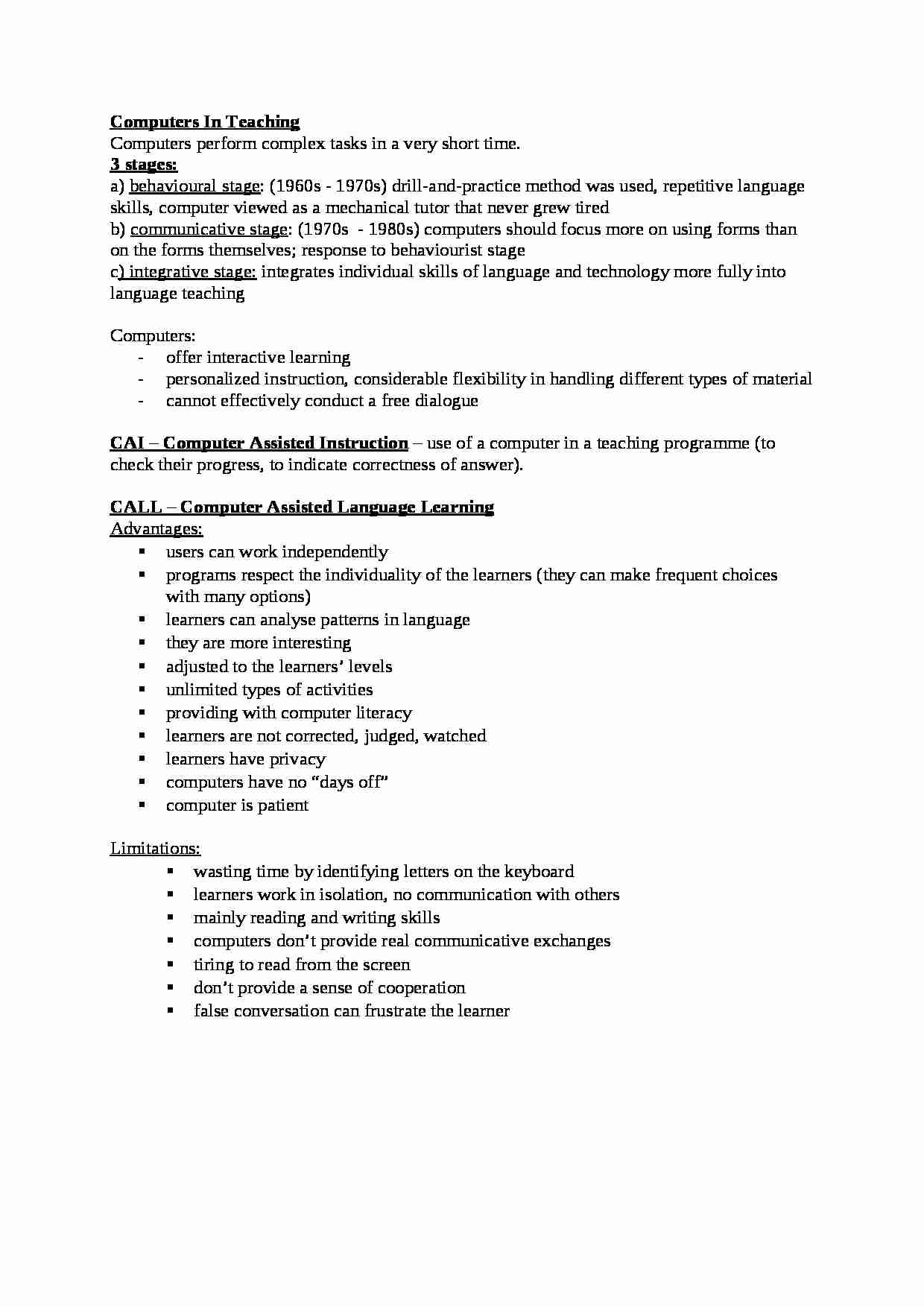
Computers In Teaching
Computers perform complex tasks in a very short time.
3 stages:
a) behavioural stage: (1960s - 1970s) drill-and-practice method was used, repetitive language skills, computer viewed as a mechanical tutor that never grew tired
b) communicative stage: (1970s - 1980s) computers should focus more on using forms than on the forms themselves; response to behaviourist stage
c) integrative stage: integrates individual skills of language and technology more fully into language teaching
Computers:
offer interactive learning
personalized instruction, considerable flexibility in handling different types of material
cannot effectively conduct a free dialogue
CAI - Computer Assisted Instruction - use of a computer in a teaching programme (to check their progress, to indicate correctness of answer).
CALL - Computer Assisted Language Learning
Advantages:
users can work independently
programs respect the individuality of the learners (they can make frequent choices with many options)
learners can analyse patterns in language
they are more interesting
adjusted to the learners' levels
unlimited types of activities
providing with computer literacy
learners are not corrected, judged, watched
learners have privacy
computers have no “days off”
computer is patient
Limitations:
wasting time by identifying letters on the keyboard
learners work in isolation, no communication with others
mainly reading and writing skills
computers don't provide real communicative exchanges
tiring to read from the screen
don't provide a sense of cooperation
false conversation can frustrate the learner
... zobacz całą notatkę



Komentarze użytkowników (0)